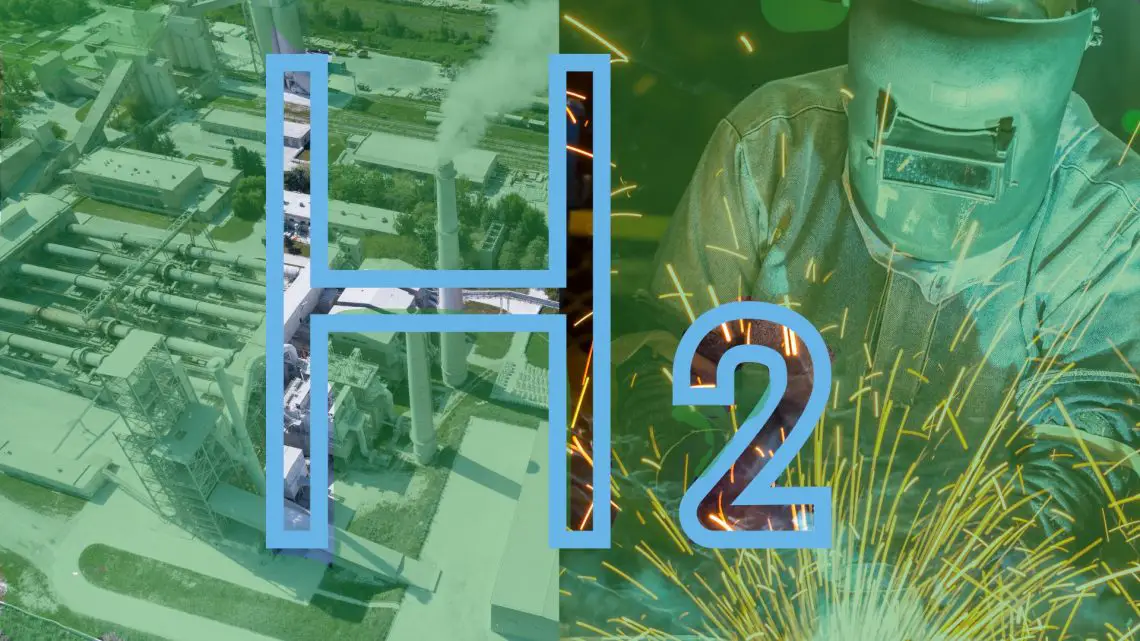
Cement and Steel Can’t Go Electric – Here’s How Hydrogen Is Changing That
December 12, 2024Hydrogen’s Role in Decarbonizing Hard-to-Abate Sectors – The Dual Energy Approach
Addressing climate change, particularly in industries that are challenging to decarbonize, demands urgent action. Heavy industries like steelmaking, cement production, and chemical manufacturing contribute significantly to global greenhouse gas emissions. These sectors are projected to become the largest source of emissions by 2035, highlighting the need for innovative approaches to reduce their environmental impact.
Rinaldo Brutoco, in his recent opinion piece on Utility Drive, stresses the importance of adopting a dual energy strategy, integrating both electricity and hydrogen to tackle these challenges. Framing the choice as “electricity versus hydrogen” oversimplifies the issue, he argues. Both energy sources fulfill complementary roles in the transition to lower emissions. While electricity can perform well in numerous sectors, hydrogen provides critical solutions in areas where electrification faces limitations.
A Hydrogen-Powered Future for Steel
Steelmaking stands out as one of the most carbon-intensive industrial processes due to its reliance on coal. Traditional steel production requires blast furnaces using coal-derived coke to reach the extremely high temperatures necessary to smelt iron ore. This process emits significant amounts of CO2 and other pollutants.
Hydrogen offers a promising alternative by reacting directly with iron ore to produce steel, with the only byproduct being water vapor. By eliminating the need for coal, this approach drastically reduces emissions.
Electric Arc Furnaces (EAFs), which use electricity, have been proposed as another cleaner option. However, they are primarily designed to recycle scrap steel rather than produce steel directly from raw iron ore. Additionally, EAFs demand substantial electricity, which may render them costly as energy prices rise. Hydrogen, meanwhile, is becoming more affordable due to advances in renewable energy and improvements in hydrogen infrastructure.
Real-world applications are already emerging. Sweden has pioneered green steel production with the HYBRIT® project, and new state-of-the-art facilities such as the Stegra plant are making strides in replacing carbon-based methods. Industrial buyers, including automotive giants, are already committing to green steel to meet sustainability goals, illustrating a broader market shift toward hydrogen-fueled steel production.
Cement Production and Hydrogen Innovation
Producing cement presents another major challenge, accounting for around 8% of global CO2 emissions. This is largely due to the process of making lime, a critical binding component of cement. Limestone must be heated in kilns to temperatures exceeding 800°C (1472°F). This not only requires large amounts of energy but also releases CO2 during the chemical decomposition of limestone.
Hydrogen is emerging as a potential game-changer in this sector. By using hydrogen to fuel kilns, CO2 emissions from energy use can be significantly reduced. Additionally, hydrogen mitigates the release of process-related emissions by enabling cleaner chemical reactions.
Concrete steps have already been taken, with key players in the cement industry adopting hydrogen technologies to reduce their carbon footprint. This demonstrates its feasibility and signals the readiness of industrial processes to incorporate hydrogen at scale.
Practical Implementation and Future Outlook
The examples from steel and cement production highlight the readiness of hydrogen technologies to address some of the hardest-to-decarbonize sectors. The progress being made with green steel production and hydrogen-fueled cement kilns emphasizes that these solutions are not just theoretical but actively being implemented.
To scale up these innovations, governments and industries must commit to building hydrogen infrastructure, subsidizing research, and incentivizing early adoption of hydrogen processes. This will lower costs, increase access to technology, and accelerate the decarbonization process.
Moving forward, hydrogen must be integrated into global energy strategies as a priority. Its ability to meet the unique demands of energy-intensive industries proves its value as more than a supplemental energy carrier—it is a fundamental part of the solution. Collaboration across sectors is essential to bring these technologies to full maturity before the 2035 emissions benchmark.
By investing in hydrogen today, we can reduce emissions at their sources and significantly advance the fight against climate change. This dual energy approach represents a practical path forward, combining innovation and urgency to ensure a sustainable future for the planet.



 With over 15 years of reporting hydrogen news, we are your premier source for the latest updates and insights in hydrogen and renewable energy.
With over 15 years of reporting hydrogen news, we are your premier source for the latest updates and insights in hydrogen and renewable energy.